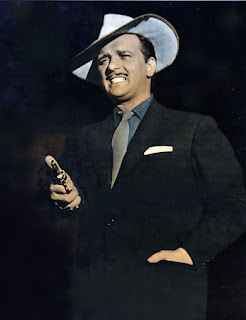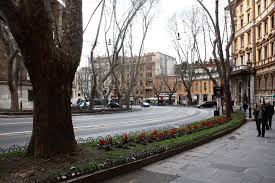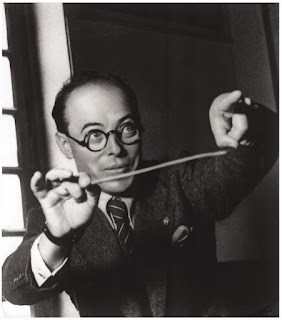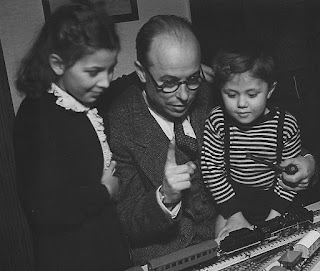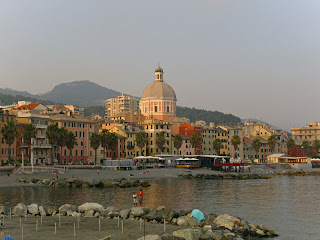Multi-talented composer of more than 1,000 songs
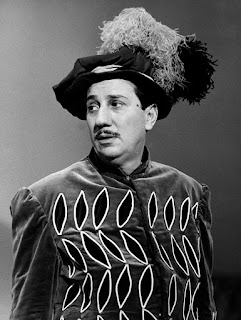 |
| Gorni Kramer was a popular performer for many decades |
An accomplished accordion and double bass player, Kramer later became a record producer, arranger and television writer. His embrace of the jazz and swing genres developed in spite of them banned from being played on Italian state radio during the Fascist era.
He was a prolific composer thought to have written more than 1,000 songs during a career that spanned 60 years.
Kramer’s non-Italian sounding name led to a popular misconception that he was born in another country, yet it was his real name - reversed.
He was born Francesco Kramer Gorni, so named because his father was a fan of the American cycling world champion Frank Kramer.
It was from his father that Gorni inherited his passion for music, having played the accordion in his father’s band.
Gorni studied double bass at the Conservatory in Parma and obtained his diploma in 1930. He began to work as a musician for dance bands, then in 1933, aged 20, formed his own jazz group.
 |
| Kramer (centre) with the comedy duo Garinei & Giovanni, with whom they worked for many years |
In the mid-1930s, by which time he was using Kramer as his professional name, his career as a songwriter took off. He composed the music for Alberto Rabagliati’s 1936 hit Crapa pelada, and in 1939 he wrote Pippo non lo sa, one of Trio Lescano's most famous songs.
During World War II, he wrote he worked with Natalino Otto, a singer also banned by the state radio station EIAR because of swing. Gorni wrote Ho un sassolino nella scarpa, one of Otto's greatest hits.
It was around the same time that he began a collaboration with Franco Cerri and the Quartetto Cetra.
In 1949 he met humorist duo Garinei e Giovanni and began to compose for their worldwide stage performances. This was his main activity for the next ten years.
Gorni made his television debut in 1957 on Il Musichiere, a music show hosted by Mario Riva. He composed the show's theme song Domenica è sempre domenica. Other shows followed, such as Buone vacanze, Giardino d'inverno, L'amico del giaguaro and Leggerissimo.
By the mid-60s, he had gradually reduced his public performances, but he continued to work as a music publisher and a TV author. He died of a heart attack, in Milan in 1995. He was survived by his daughters Teresa and Laura.
 |
| One of the three gateways into the historic village of Rivarolo Mantovano |
Rivarolo Mantovano, Gorni Kramer’s birthplace, is an historic village in Lombardy in the province of Mantua, the city of Mantua being some 30km (19 miles) to the northwest. It was known as Rivarolo di Fuori until 1907. The village with a squared plan and perpendicular roads as established by duke Vespasiano I Gonzaga in the late 16th century. The perimeter walls, interrupted by three gates, enclose the entire village in a rectangular shape. Along the village streets it is rare to find buildings that stand out from the others, with the exception of the main square, once called Piazza Grande (now Piazza Finzi), around which most of the important buildings are clustered.
 |
| The Conservatory of Parma was named after Arrigo Boito, who was the author of several libretti for Verdi operas |
Parma, where Gorni Kramer attended the Conservatory, is an historic city in the Emilia-Romagna region, famous for its Prosciutto di Parma ham and Parmigiano Reggiano cheese, the true ‘parmesan’. In 1545 the city was given as a duchy to the illegitimate son of Pope Paul III, whose descendants ruled Parma till 1731. The composer, Verdi, was born near Parma at Bussetto and the city has a prestigious opera house, the Teatro Regio. The Conservatory, named in honour of Arrigo Boito, who wrote the libretti for many of Verdi’s operas, is on Strada Conservatorio.
More reading:
Pippo Barzizza, pioneer of Italian jazz and swing
The short life of 50s jazz club sensation Fred Buscaglione
Renato Carosone, writer of classic Italian songs
Also on this day:
1559: The birth of St Lawrence of Brindisi
1943: Palermo falls to the Allies
2001: The death of the great 20th century journalist Indro Montanelli
Home
